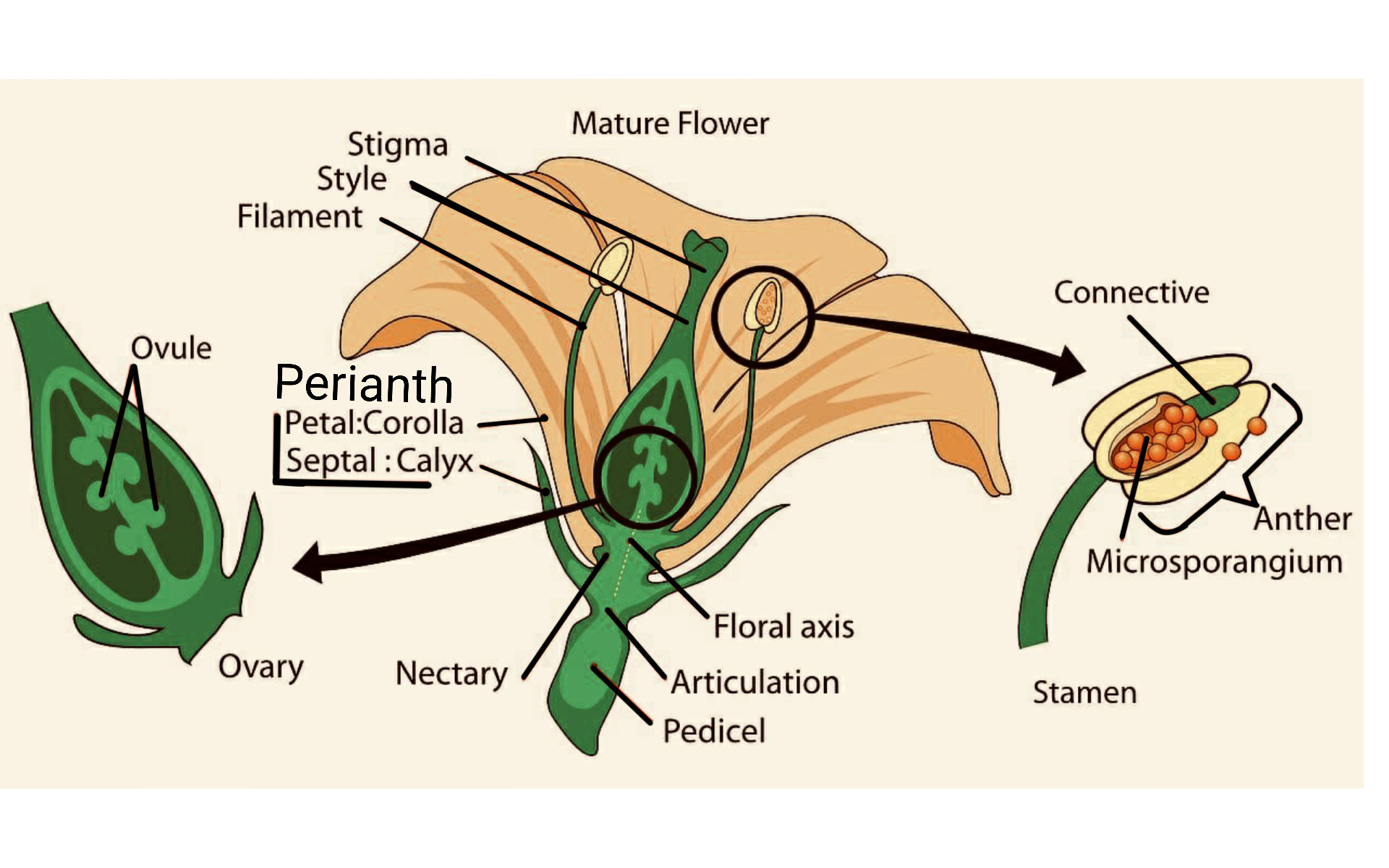
For self-pollination, flower must be
A.Unisexual
B.Bisexual
C.Monosexual
D.Asexual
Answer
463.2k+ views
Hint: Pollination is a process in which pollen grains are transferred from anther to stigma. It results in fertilization of female gamete with male gamete. There are two types i.e. Self-pollination and cross pollination. Self-pollination takes place within the flower. Cross pollination occurs from one to another flower.
Complete answer:
Pollination is of two types.
(a) Self-pollination (autogamy): It takes place within a flower
(b) Cross-pollination (allogamy): It occurs from one flower to another flower.
It is of two subtypes:
(i) Geitonogamy: It is from one flower to another flower on the same plant. Genetically, it is a self-pollination ecologically a cross-pollination
(ii) Xenogamy: It is a true cross-pollination that occurs from one plant to another plant.
self-pollination : It is true pollination. The pollen grains are tranfered from anther to stigma within same flower which means they need to be bisexual. It does not require pollination.
Adaptations for self-pollination: The most favourable conditions for self-pollination are as under:
(i) Bisexuality: Bisexual flowers ensures self-pollination.
(ii) Homogamy : It is a condition where stamen and carpel mature at the same time.
(iii) Cleistogamy :Cleistogamous flowers never open and seed setting in these flowers occur without the exposition of their sex-organs as these flowers are bisexual. Commelina benghalensis is the striking example of cleistogamy. Other examples include members of family Violaceae, Balsaminaceae and Polygonaceae.
Cleistogamy ensures self-pollination as there are no chances of cross-pollination.
In Commelina benghalensis and Arachis hypogea (groundnut) cleistogamy is accompanied by geocarpy (formation of fruits below the soil).

Hence, the correct answer is option (B)
Note: Advantage/Disadvantage of self-pollination
(a) Self-pollination is almost certain in a bisexual flower. It is an independent process.
(b) Another advantage is purity of generation.
(c) The most distinct disadvantage of self-pollination is that it results in a weaker progeny if it continues for several generations.
Complete answer:
Pollination is of two types.
(a) Self-pollination (autogamy): It takes place within a flower
(b) Cross-pollination (allogamy): It occurs from one flower to another flower.
It is of two subtypes:
(i) Geitonogamy: It is from one flower to another flower on the same plant. Genetically, it is a self-pollination ecologically a cross-pollination
(ii) Xenogamy: It is a true cross-pollination that occurs from one plant to another plant.
self-pollination : It is true pollination. The pollen grains are tranfered from anther to stigma within same flower which means they need to be bisexual. It does not require pollination.
Adaptations for self-pollination: The most favourable conditions for self-pollination are as under:
(i) Bisexuality: Bisexual flowers ensures self-pollination.
(ii) Homogamy : It is a condition where stamen and carpel mature at the same time.
(iii) Cleistogamy :Cleistogamous flowers never open and seed setting in these flowers occur without the exposition of their sex-organs as these flowers are bisexual. Commelina benghalensis is the striking example of cleistogamy. Other examples include members of family Violaceae, Balsaminaceae and Polygonaceae.
Cleistogamy ensures self-pollination as there are no chances of cross-pollination.
In Commelina benghalensis and Arachis hypogea (groundnut) cleistogamy is accompanied by geocarpy (formation of fruits below the soil).

Hence, the correct answer is option (B)
Note: Advantage/Disadvantage of self-pollination
(a) Self-pollination is almost certain in a bisexual flower. It is an independent process.
(b) Another advantage is purity of generation.
(c) The most distinct disadvantage of self-pollination is that it results in a weaker progeny if it continues for several generations.
Recently Updated Pages
Master Class 12 Economics: Engaging Questions & Answers for Success

Master Class 12 Maths: Engaging Questions & Answers for Success

Master Class 12 Biology: Engaging Questions & Answers for Success

Master Class 12 Physics: Engaging Questions & Answers for Success

Master Class 12 Business Studies: Engaging Questions & Answers for Success

Master Class 12 English: Engaging Questions & Answers for Success

Trending doubts
Who is Mukesh What is his dream Why does it look like class 12 english CBSE

Who was RajKumar Shukla Why did he come to Lucknow class 12 english CBSE

The word Maasai is derived from the word Maa Maasai class 12 social science CBSE

What is the Full Form of PVC, PET, HDPE, LDPE, PP and PS ?

Why is the cell called the structural and functional class 12 biology CBSE

Which country did Danny Casey play for class 12 english CBSE




